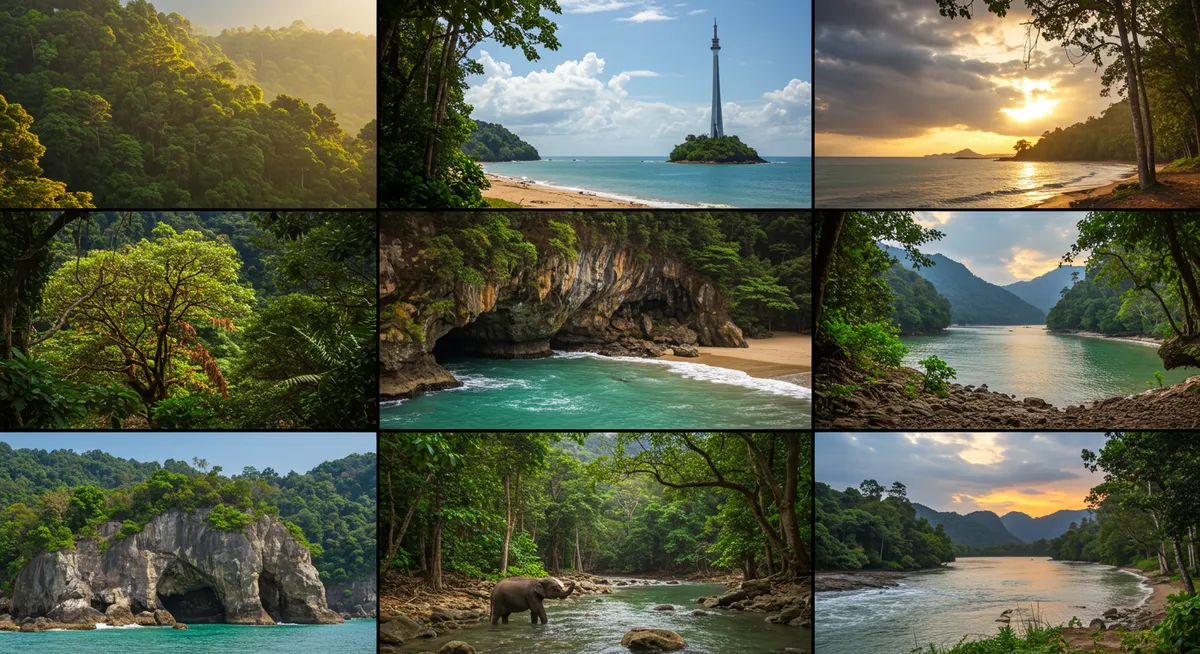
Top Miri Nature Photography Spots Revealed
Table of Contents
Want to find the best nature experiences for this destination? Chat with our nature tourism specialist!
Get Nature TipsCategory: miri-nature-photography-spots
Discovering Miri's Best Nature Photography Spots
Having personally traversed Sarawak for years, with my camera always in hand, I can attest that Miri truly offers a treasure trove for nature photographers. This vibrant Malaysian city, often called the 'Gateway to Borneo,' is surrounded by incredible natural beauty, presenting countless opportunities for stunning landscape and wildlife shots. From verdant rainforests teeming with exotic flora and fauna to dramatic coastal formations, Miri's diverse ecosystems make it an ideal destination for capturing the wild essence of Borneo. Prepare to unlock your creativity as we dive into the most captivating Miri nature photography spots.
Lambir Hills National Park: Rainforest and Waterfalls
Just a short drive from Miri, Lambir Hills National Park is an absolute gem for anyone interested in Miri nature photography spots. Its ancient rainforest boasts an astonishing biodiversity, providing endless opportunities for macro photography of insects, fungi, and rare plants. The park is renowned for its numerous waterfalls, which offer fantastic landscape photography prospects, especially after rainfall. When I visited, the sound of cascading water paired with the dense canopy created a truly immersive experience for capturing the vibrant greens of the jungle. Remember to bring a tripod for those long exposure waterfall shots and a wide-angle lens to fully capture the rainforest's grandeur. For more detailed insights into planning your visit, explore our comprehensive Lambir Hills National Park guide.
Niah National Park: Ancient Caves and Unique Light
Niah National Park offers a completely different, yet equally captivating, set of Miri nature photography spots. Famous for its archaeological significance and vast cave systems, Niah presents incredible challenges and rewards for photographers. The Great Cave, in particular, with its massive entrance and shafts of light piercing through the gloom, creates dramatic lighting conditions perfect for unique shots. You can also capture the ancient human footprint and the fascinating ecosystem of bats and swiftlets within. It’s an otherworldly experience that calls for a keen eye for detail and understanding of low-light techniques. For more information on its historical significance and what to expect, check out our piece on Niah Caves' historical significance.
Tusan Cliff & Beach: Coastal Wonders
For coastal Miri nature photography spots, Tusan Cliff and Beach is a must-visit. Located about an hour's drive south of the city, this breathtaking location is celebrated for its distinctive rock formations, particularly the 'Horse Head' cliff (though it has partially collapsed). It's an ideal spot for sunset photography, with vibrant hues painting the sky over the South China Sea. Furthermore, during certain times of the year, Tusan Beach becomes famous for its 'Blue Tears' phenomenon – bioluminescent plankton that light up the shoreline at night, offering a rare nocturnal photography opportunity. My personal tip is to arrive early to scout your compositions and capture both the golden hour and twilight magic.
Mulu National Park: A World Heritage Marvel (Accessed via Miri)
While not strictly *in* Miri, Gunung Mulu National Park is undoubtedly one of Borneo's premier nature photography spots, typically accessed via a short flight from Miri. A UNESCO World Heritage site, Mulu is famed for its monumental caves, dramatic limestone karsts, and spectacular rainforest biodiversity. Photographers can capture stunning cave formations like Deer Cave and Sarawak Chamber, diverse wildlife, and the incredible 'Bat Exodus' phenomenon at dusk. It's a grand scale photographic adventure that complements the closer Miri nature photography spots. For anyone planning this significant extension to their trip, our guide on Mulu National Park tours from Miri offers invaluable planning advice and insights into this unparalleled natural wonder.
Frequently Asked Questions
What's the best time of year for nature photography in Miri?
What essential equipment should I bring for Miri nature photography?
Are there guided photography tours available in Miri?
Miri truly stands out as an exceptional destination for nature photographers, offering a diverse array of stunning landscapes and unique wildlife. From the intricate ecosystems of Lambir Hills and the ancient wonders of Niah Caves to the captivating coastal beauty of Tusan, these Miri nature photography spots promise unforgettable visual experiences. Each location provides distinct opportunities to hone your craft and capture the raw, untamed beauty of Borneo. So pack your gear, prepare to be inspired, and embark on an incredible photographic journey to discover the natural splendors that await you in Miri. Start planning your photographic expedition today!